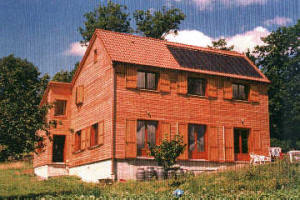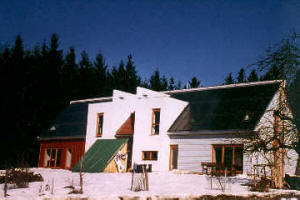Solar combisystems are solar heating installations providing space heating as well as domestic hot water for the inhabitants of the building. The primary energy sources are solar energy as well as an auxiliary source such as biomass, gas, oil and electricity, either direct or with a heat pump. The solar contribution, i.e. the part of the heating demand met by solar energy varies from 10 percent for some systems up to 100% for others, depending on the size of the solar collector surface, the storage volume, the heat load and the climate.
In this task the term "solar combisystems" is used only for detached one-family houses, groups of one-family houses, or multifamily buildings with their own heating installations. It does not refer to solar district heating systems or systems with seasonal storage or central solar heating plants with seasonal storage. Solar combisystems generally consist five elements: a solar collector loop; a storage subsystem; a control subsystem; an auxiliary subsystem; and a heat distribution subsystem. Solar combisystems do not generally refer to systems with cooling capabilities. In special designs, the storage subsystem can be combined with the heat distribution subsystem, e. g. floor heating.


Fig. 1: Solar Combisystem France, Direct Solar Floor Fig.2: Solar Combisystem for a two family house in Austria